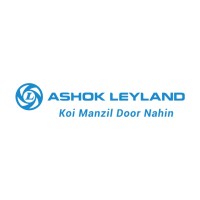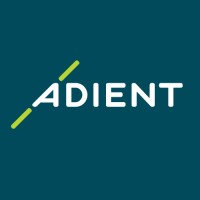
Ashok Leyland Company Cyber Security Posture
ashokleyland.comAshok Leyland vehicles have built a reputation for reliability and ruggedness. The 5,00,000 vehicles we have put on the roads have considerably eased the additional pressure placed on road transportation in independent India. In the populous Indian metros, four out of the five State Transport Undertaking (STU) buses come from Ashok Leyland. Some of them like the double-decker and vestibule buses are unique models from Ashok Leyland, tailor-made for high-density routes. The blueprint prepared for the future reflected the global ambitions of the company, captured in four words: Global Standards, Global Markets. This was at a time when liberalisation and globalisation were not yet in the air. Ashok Leyland embarked on a major product and process upgradation to match world-class standards of technology. In the journey towards global standards of quality, Ashok Leyland reached a major milestone in 1993 when it became the first in India's automobile history to win the ISO 9002 certification. The more comprehensive ISO 9001 certification came in 1994, QS 9000 in 1998 and ISO 14001 certification for all vehicle manufacturing units in 2002. It has also become the first Indian auto company to receive the latest ISO/TS 16949 Corporate Certification (in July 2006) which is specific to the auto industry.
Ashok Leyland Company Details
ashok-leyland
23661 employees
900468.0
336
Motor Vehicle Manufacturing
ashokleyland.com
Scan still pending
ASH_1349004
In-progress
Between 900 and 1000
This score is AI-generated and less favored by cyber insurers, who prefer the TPRM score.
 Ashok Leyland Global Score
Ashok Leyland Global Score.png)

Ashok Leyland Company Scoring based on AI Models
| Model Name | Date | Description | Current Score Difference | Score |
|---|---|---|---|---|
| AVERAGE-Industry | 03-12-2025 | This score represents the average cybersecurity rating of companies already scanned within the same industry. It provides a benchmark to compare an individual company's security posture against its industry peers. | N/A | Between 900 and 1000 |
Ashok Leyland Company Cyber Security News & History
| Entity | Type | Severity | Impact | Seen | Url ID | Details | View |
|---|
Ashok Leyland Company Subsidiaries

Ashok Leyland vehicles have built a reputation for reliability and ruggedness. The 5,00,000 vehicles we have put on the roads have considerably eased the additional pressure placed on road transportation in independent India. In the populous Indian metros, four out of the five State Transport Undertaking (STU) buses come from Ashok Leyland. Some of them like the double-decker and vestibule buses are unique models from Ashok Leyland, tailor-made for high-density routes. The blueprint prepared for the future reflected the global ambitions of the company, captured in four words: Global Standards, Global Markets. This was at a time when liberalisation and globalisation were not yet in the air. Ashok Leyland embarked on a major product and process upgradation to match world-class standards of technology. In the journey towards global standards of quality, Ashok Leyland reached a major milestone in 1993 when it became the first in India's automobile history to win the ISO 9002 certification. The more comprehensive ISO 9001 certification came in 1994, QS 9000 in 1998 and ISO 14001 certification for all vehicle manufacturing units in 2002. It has also become the first Indian auto company to receive the latest ISO/TS 16949 Corporate Certification (in July 2006) which is specific to the auto industry.
Access Data Using Our API

Get company history
.png)
Ashok Leyland Cyber Security News
ETCISO SecuFest 2025: Where cybersecurity found its culture code
Sessions addressed the full spectrum—from cloud transformation and India's new privacy mandates to OT/IT convergence and AI governance. Leaders ...
Operant AI Launches Red Teaming Engine Woodpecker To Simulate Cyberattacks, Improve Cybersecurity
Red teaming is a simulated cyberattack conducted to test and improve an organisation's cybersecurity readiness.
SHOW REVIEW: Cross-industry collaboration, SDVs, ADAS, cybersecurity and vehicle safety at Automotive Testing Expo India 2025
Over 200 industry-leading suppliers launched new products and showcased cutting-edge advances in full-vehicle, component and systems development across two ...
Elastic & Tines partner to streamline security and observability automation
Elastic has partnered with Tines Workflow Automation and the Elastic Search AI Platform to simplify security and observability workflow automation.
Operation Sindoor: Government Steps Up Screening Of Cross-Border Cybersecurity Threats
The focus is especially on cyber threats and system vulnerabilities originating from across the border, according to government sources. The ...
India’s strategic foray into Central America: Reliance Jio, C-DOT spearhead cybersecurity push in El Salvador, Guatemala
India is rapidly expanding its influence in Central America, particularly in the telecommunications and cybersecurity sectors.
Kyndryl and Cloudflare Announce Global Strategic Alliance to Drive Enterprise Network Transformation, Multi-Cloud Innovation, and Zero Trust Security
The Kyndryl and Cloudflare global strategic alliance is focused on helping enterprises streamline connectivity to multiple clouds and data ...
Ashok Leyland manages to optimize while migrating to SAP HANA data warehouse
To manage its extensive network of suppliers and distributors, Ashok Leyland decided to upgrade to SAP BW on HANA platforms from its existing SAP BW system.
Dangerous: AI, Cloud Creating New Cyberattack Surface, But Indian Firms Prioritising Speed Over Security
Organisations are inadvertently creating a new identity-centric attack surface through growing use of artificial intelligence and cloud.

Ashok Leyland Similar Companies

FORVIA HELLA
FORVIA HELLA is a listed international automotive supplier. As a company of the FORVIA Group, FORVIA HELLA stands for high-performance lighting technology and vehicle electronics and, with the Lifecycle Solutions Business Group, also covers a broad service and product portfolio for the spare parts a

Michelin
Michelin is a world-leading manufacturer of life-changing composites and experiences. Pioneering materials science over more than 130 years, Michelin is uniquely positioned to make decisive contributions to human progress and a more sustainable world. Drawing on technological leadership in polymer

Adient
Adient (NYSE: ADNT) is a global leader in automotive seating. With 70,000+ employees in 29 countries, Adient operates more than 200 manufacturing/assembly plants worldwide. We produce and deliver automotive seating for all major OEMs. From complete seating systems to individual foam, trim and metal

Mercedes-Benz AG
"Love of invention will never end." - Carl Benz Learn more about us as we continue to pioneer the future of driving excellence. Data privacy: mb4.me/provider_privacy Imprint: Mercedes-Benz AG Mercedesstraße 120 D-70372 Stuttgart Deutschland Tel.: +49 7 11 17-0 E-Mail: dialog.mb@mercedes-benz.

PACCAR
PACCAR is a global technology leader in the design, manufacture and customer support of premium light-, medium- and heavy-duty trucks under the Kenworth, Peterbilt and DAF nameplates. PACCAR also designs and manufactures advanced diesel engines, provides financial services, information technology, a

Royal Enfield
The oldest motorcycle brand in continuous production, Royal Enfield made its first motorcycle in 1901. A division of Eicher Motors Limited, Royal Enfield has created the mid-sized motorcycle segment in India with its unique and distinctive modern classic bikes. Royal Enfield operates in 60+ countr

Frequently Asked Questions (FAQ) on Cybersecurity Incidents
Ashok Leyland CyberSecurity History Information
Total Incidents: According to Rankiteo, Ashok Leyland has faced 0 incidents in the past.
Incident Types: As of the current reporting period, Ashok Leyland has not encountered any cybersecurity incidents.
Total Financial Loss: The total financial loss from these incidents is estimated to be {total_financial_loss}.
Cybersecurity Posture: The company's overall cybersecurity posture is described as Ashok Leyland vehicles have built a reputation for reliability and ruggedness. The 5,00,000 vehicles we have put on the roads have considerably eased the additional pressure placed on road transportation in independent India. In the populous Indian metros, four out of the five State Transport Undertaking (STU) buses come from Ashok Leyland. Some of them like the double-decker and vestibule buses are unique models from Ashok Leyland, tailor-made for high-density routes. The blueprint prepared for the future reflected the global ambitions of the company, captured in four words: Global Standards, Global Markets. This was at a time when liberalisation and globalisation were not yet in the air. Ashok Leyland embarked on a major product and process upgradation to match world-class standards of technology. In the journey towards global standards of quality, Ashok Leyland reached a major milestone in 1993 when it became the first in India's automobile history to win the ISO 9002 certification. The more comprehensive ISO 9001 certification came in 1994, QS 9000 in 1998 and ISO 14001 certification for all vehicle manufacturing units in 2002. It has also become the first Indian auto company to receive the latest ISO/TS 16949 Corporate Certification (in July 2006) which is specific to the auto industry..
Detection and Response: The company detects and responds to cybersecurity incidents through {description_of_detection_and_response_process}.
Incident Details
Incident 1: Ransomware Attack
Title: {Incident_Title}
Description: {Brief_description_of_the_incident}
Date Detected: {Detection_Date}
Date Publicly Disclosed: {Disclosure_Date}
Date Resolved: {Resolution_Date}
Type: {Type_of_Attack}
Attack Vector: {Attack_Vector}
Vulnerability Exploited: {Vulnerability}
Threat Actor: {Threat_Actor}
Motivation: {Motivation}
Incident 2: Data Breach
Title: {Incident_Title}
Description: {Brief_description_of_the_incident}
Date Detected: {Detection_Date}
Date Publicly Disclosed: {Disclosure_Date}
Date Resolved: {Resolution_Date}
Type: {Type_of_Attack}
Attack Vector: {Attack_Vector}
Vulnerability Exploited: {Vulnerability}
Threat Actor: {Threat_Actor}
Motivation: {Motivation}
Common Attack Types: As of now, the company has not encountered any reported incidents involving common cyberattacks.
Identification of Attack Vectors: The company identifies the attack vectors used in incidents through {description_of_identification_process}.
Impact of the Incidents
Incident 1: Ransomware Attack
Financial Loss: {Financial_Loss}
Data Compromised: {Data_Compromised}
Systems Affected: {Systems_Affected}
Downtime: {Downtime}
Operational Impact: {Operational_Impact}
Conversion Rate Impact: {Conversion_Rate_Impact}
Revenue Loss: {Revenue_Loss}
Customer Complaints: {Customer_Complaints}
Brand Reputation Impact: {Brand_Reputation_Impact}
Legal Liabilities: {Legal_Liabilities}
Identity Theft Risk: {Identity_Theft_Risk}
Payment Information Risk: {Payment_Information_Risk}
Incident 2: Data Breach
Financial Loss: {Financial_Loss}
Data Compromised: {Data_Compromised}
Systems Affected: {Systems_Affected}
Downtime: {Downtime}
Operational Impact: {Operational_Impact}
Conversion Rate Impact: {Conversion_Rate_Impact}
Revenue Loss: {Revenue_Loss}
Customer Complaints: {Customer_Complaints}
Brand Reputation Impact: {Brand_Reputation_Impact}
Legal Liabilities: {Legal_Liabilities}
Identity Theft Risk: {Identity_Theft_Risk}
Payment Information Risk: {Payment_Information_Risk}
Average Financial Loss: The average financial loss per incident is {average_financial_loss}.
Commonly Compromised Data Types: The types of data most commonly compromised in incidents are {list_of_commonly_compromised_data_types}.
Incident 1: Ransomware Attack
Entity Name: {Entity_Name}
Entity Type: {Entity_Type}
Industry: {Industry}
Location: {Location}
Size: {Size}
Customers Affected: {Customers_Affected}
Incident 2: Data Breach
Entity Name: {Entity_Name}
Entity Type: {Entity_Type}
Industry: {Industry}
Location: {Location}
Size: {Size}
Customers Affected: {Customers_Affected}
Response to the Incidents
Incident 1: Ransomware Attack
Incident Response Plan Activated: {Yes/No}
Third Party Assistance: {Yes/No}
Law Enforcement Notified: {Yes/No}
Containment Measures: {Containment_Measures}
Remediation Measures: {Remediation_Measures}
Recovery Measures: {Recovery_Measures}
Communication Strategy: {Communication_Strategy}
Adaptive Behavioral WAF: {Adaptive_Behavioral_WAF}
On-Demand Scrubbing Services: {On_Demand_Scrubbing_Services}
Network Segmentation: {Network_Segmentation}
Enhanced Monitoring: {Enhanced_Monitoring}
Incident 2: Data Breach
Incident Response Plan Activated: {Yes/No}
Third Party Assistance: {Yes/No}
Law Enforcement Notified: {Yes/No}
Containment Measures: {Containment_Measures}
Remediation Measures: {Remediation_Measures}
Recovery Measures: {Recovery_Measures}
Communication Strategy: {Communication_Strategy}
Adaptive Behavioral WAF: {Adaptive_Behavioral_WAF}
On-Demand Scrubbing Services: {On_Demand_Scrubbing_Services}
Network Segmentation: {Network_Segmentation}
Enhanced Monitoring: {Enhanced_Monitoring}
Incident Response Plan: The company's incident response plan is described as {description_of_incident_response_plan}.
Third-Party Assistance: The company involves third-party assistance in incident response through {description_of_third_party_involvement}.
Data Breach Information
Incident 2: Data Breach
Type of Data Compromised: {Type_of_Data}
Number of Records Exposed: {Number_of_Records}
Sensitivity of Data: {Sensitivity_of_Data}
Data Exfiltration: {Yes/No}
Data Encryption: {Yes/No}
File Types Exposed: {File_Types}
Personally Identifiable Information: {Yes/No}
Prevention of Data Exfiltration: The company takes the following measures to prevent data exfiltration: {description_of_prevention_measures}.
Handling of PII Incidents: The company handles incidents involving personally identifiable information (PII) through {description_of_handling_process}.
Ransomware Information
Incident 1: Ransomware Attack
Ransom Demanded: {Ransom_Amount}
Ransom Paid: {Ransom_Paid}
Ransomware Strain: {Ransomware_Strain}
Data Encryption: {Yes/No}
Data Exfiltration: {Yes/No}
Ransom Payment Policy: The company's policy on paying ransoms in ransomware incidents is described as {description_of_ransom_payment_policy}.
Data Recovery from Ransomware: The company recovers data encrypted by ransomware through {description_of_data_recovery_process}.
Regulatory Compliance
Incident 1: Ransomware Attack
Regulations Violated: {Regulations_Violated}
Fines Imposed: {Fines_Imposed}
Legal Actions: {Legal_Actions}
Regulatory Notifications: {Regulatory_Notifications}
Incident 2: Data Breach
Regulations Violated: {Regulations_Violated}
Fines Imposed: {Fines_Imposed}
Legal Actions: {Legal_Actions}
Regulatory Notifications: {Regulatory_Notifications}
Regulatory Frameworks: The company complies with the following regulatory frameworks regarding cybersecurity: {list_of_regulatory_frameworks}.
Ensuring Regulatory Compliance: The company ensures compliance with regulatory requirements through {description_of_compliance_measures}.
Lessons Learned and Recommendations
Incident 1: Ransomware Attack
Lessons Learned: {Lessons_Learned}
Incident 2: Data Breach
Lessons Learned: {Lessons_Learned}
Incident 1: Ransomware Attack
Recommendations: {Recommendations}
Incident 2: Data Breach
Recommendations: {Recommendations}
Key Lessons Learned: The key lessons learned from past incidents are {list_of_key_lessons_learned}.
Implemented Recommendations: The company has implemented the following recommendations to improve cybersecurity: {list_of_implemented_recommendations}.
References
Additional Resources: Stakeholders can find additional resources on cybersecurity best practices at {list_of_additional_resources}.
Investigation Status
Incident 1: Ransomware Attack
Investigation Status: {Investigation_Status}
Incident 2: Data Breach
Investigation Status: {Investigation_Status}
Communication of Investigation Status: The company communicates the status of incident investigations to stakeholders through {description_of_communication_process}.
Stakeholder and Customer Advisories
Incident 1: Ransomware Attack
Stakeholder Advisories: {Stakeholder_Advisories}
Customer Advisories: {Customer_Advisories}
Incident 2: Data Breach
Stakeholder Advisories: {Stakeholder_Advisories}
Customer Advisories: {Customer_Advisories}
Advisories Provided: The company provides the following advisories to stakeholders and customers following an incident: {description_of_advisories_provided}.
Initial Access Broker
Incident 1: Ransomware Attack
Entry Point: {Entry_Point}
Reconnaissance Period: {Reconnaissance_Period}
Backdoors Established: {Backdoors_Established}
High Value Targets: {High_Value_Targets}
Data Sold on Dark Web: {Yes/No}
Incident 2: Data Breach
Entry Point: {Entry_Point}
Reconnaissance Period: {Reconnaissance_Period}
Backdoors Established: {Backdoors_Established}
High Value Targets: {High_Value_Targets}
Data Sold on Dark Web: {Yes/No}
Monitoring and Mitigation of Initial Access Brokers: The company monitors and mitigates the activities of initial access brokers through {description_of_monitoring_and_mitigation_measures}.
Post-Incident Analysis
Incident 1: Ransomware Attack
Root Causes: {Root_Causes}
Corrective Actions: {Corrective_Actions}
Incident 2: Data Breach
Root Causes: {Root_Causes}
Corrective Actions: {Corrective_Actions}
Post-Incident Analysis Process: The company's process for conducting post-incident analysis is described as {description_of_post_incident_analysis_process}.
Corrective Actions Taken: The company has taken the following corrective actions based on post-incident analysis: {list_of_corrective_actions_taken}.
Additional Questions
General Information
Ransom Payment History: The company has {paid/not_paid} ransoms in the past.
Last Ransom Demanded: The amount of the last ransom demanded was {last_ransom_amount}.
Last Attacking Group: The attacking group in the last incident was {last_attacking_group}.
Incident Details
Most Recent Incident Detected: The most recent incident detected was on {most_recent_incident_detected_date}.
Most Recent Incident Publicly Disclosed: The most recent incident publicly disclosed was on {most_recent_incident_publicly_disclosed_date}.
Most Recent Incident Resolved: The most recent incident resolved was on {most_recent_incident_resolved_date}.
Impact of the Incidents
Highest Financial Loss: The highest financial loss from an incident was {highest_financial_loss}.
Most Significant Data Compromised: The most significant data compromised in an incident was {most_significant_data_compromised}.
Most Significant System Affected: The most significant system affected in an incident was {most_significant_system_affected}.
Response to the Incidents
Third-Party Assistance in Most Recent Incident: The third-party assistance involved in the most recent incident was {third_party_assistance_in_most_recent_incident}.
Containment Measures in Most Recent Incident: The containment measures taken in the most recent incident were {containment_measures_in_most_recent_incident}.
Data Breach Information
Most Sensitive Data Compromised: The most sensitive data compromised in a breach was {most_sensitive_data_compromised}.
Number of Records Exposed: The number of records exposed in the most significant breach was {number_of_records_exposed}.
Ransomware Information
Highest Ransom Demanded: The highest ransom demanded in a ransomware incident was {highest_ransom_demanded}.
Highest Ransom Paid: The highest ransom paid in a ransomware incident was {highest_ransom_paid}.
Regulatory Compliance
Highest Fine Imposed: The highest fine imposed for a regulatory violation was {highest_fine_imposed}.
Most Significant Legal Action: The most significant legal action taken for a regulatory violation was {most_significant_legal_action}.
Lessons Learned and Recommendations
Most Significant Lesson Learned: The most significant lesson learned from past incidents was {most_significant_lesson_learned}.
Most Significant Recommendation Implemented: The most significant recommendation implemented to improve cybersecurity was {most_significant_recommendation_implemented}.
References
Most Recent Source: The most recent source of information about an incident is {most_recent_source}.
Most Recent URL for Additional Resources: The most recent URL for additional resources on cybersecurity best practices is {most_recent_url}.
Investigation Status
Current Status of Most Recent Investigation: The current status of the most recent investigation is {current_status_of_most_recent_investigation}.
Stakeholder and Customer Advisories
Most Recent Stakeholder Advisory: The most recent stakeholder advisory issued was {most_recent_stakeholder_advisory}.
Most Recent Customer Advisory: The most recent customer advisory issued was {most_recent_customer_advisory}.
Initial Access Broker
Most Recent Entry Point: The most recent entry point used by an initial access broker was {most_recent_entry_point}.
Most Recent Reconnaissance Period: The most recent reconnaissance period for an incident was {most_recent_reconnaissance_period}.
Post-Incident Analysis
Most Significant Root Cause: The most significant root cause identified in post-incident analysis was {most_significant_root_cause}.
Most Significant Corrective Action: The most significant corrective action taken based on post-incident analysis was {most_significant_corrective_action}.
What Do We Measure?
















Every week, Rankiteo analyzes billions of signals to give organizations a sharper, faster view of emerging risks. With deeper, more actionable intelligence at their fingertips, security teams can outpace threat actors, respond instantly to Zero-Day attacks, and dramatically shrink their risk exposure window.
These are some of the factors we use to calculate the overall score:
Identify exposed access points, detect misconfigured SSL certificates, and uncover vulnerabilities across the network infrastructure.
Gain visibility into the software components used within an organization to detect vulnerabilities, manage risk, and ensure supply chain security.
Monitor and manage all IT assets and their configurations to ensure accurate, real-time visibility across the company's technology environment.
Leverage real-time insights on active threats, malware campaigns, and emerging vulnerabilities to proactively defend against evolving cyberattacks.




